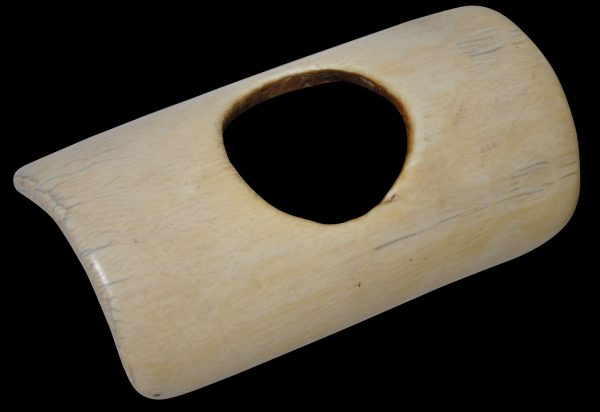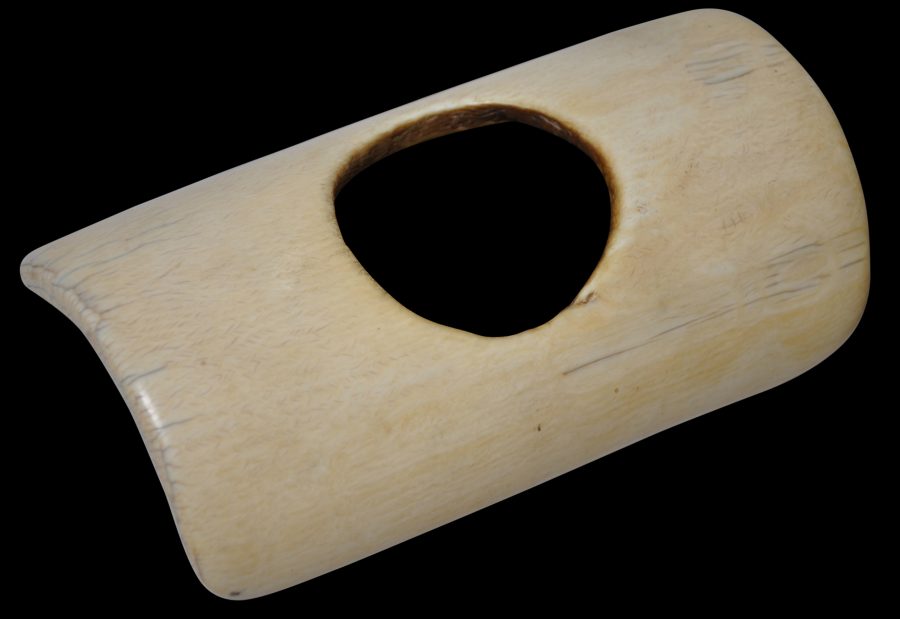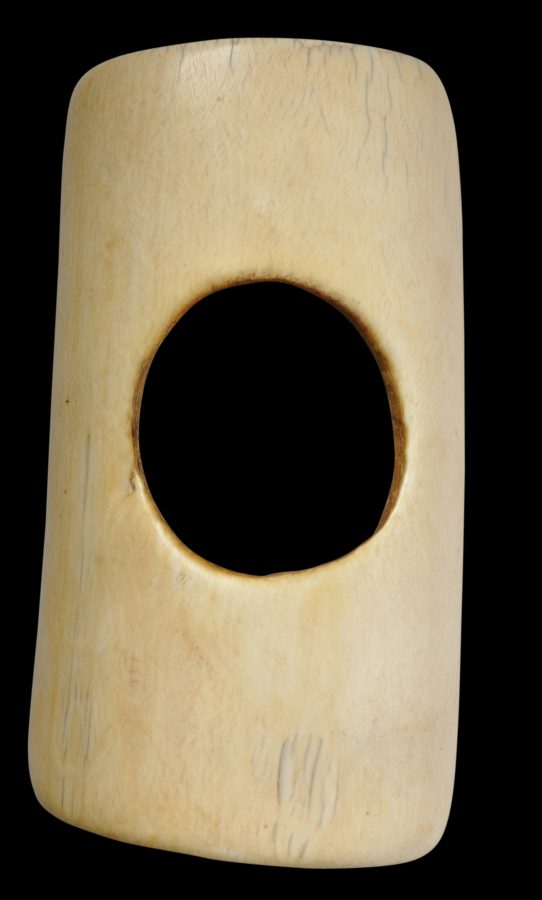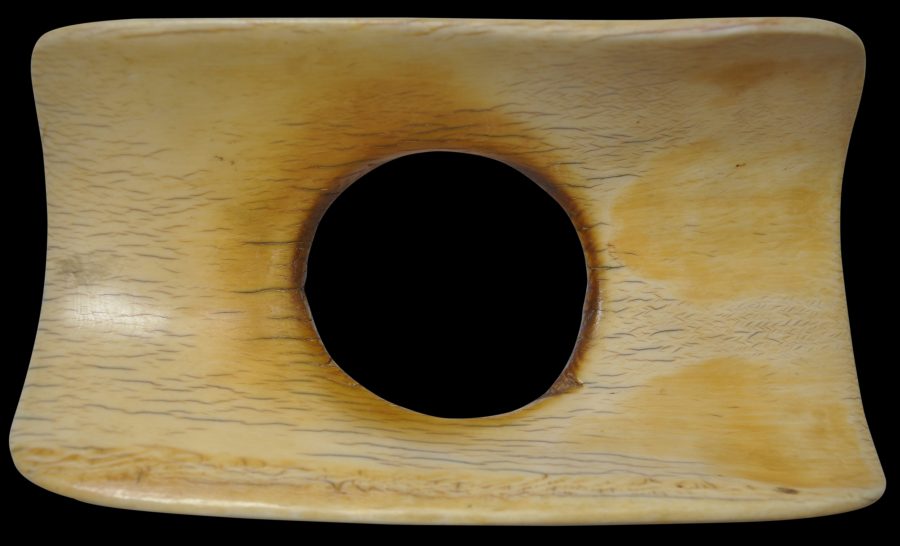This fine bracelet or arm band has been carved from a single piece of ivory. It is a relatively large and heavy example. It is from the Gurunsi and Kasena peoples of West Africa and is of typical form – a form that is unique to these groups but also almost iconic. These groups also wore bracelets carved from wood. Ivory bracelets, however, were worn as a sign of wealth.
The bracelet follows the natural curve of the tusk but has rounded corners and edges and a whole for the wrist has been cut into the middle.
Examples are illustrated in Bacquart (1998, p. 68), Sieber (2000, p. 91), and van Cutsem (2000, p. 66).
An example comprised lot 159 at Christie’s Paris ‘Art Africain et Oceanien’ sale, December 11, 2007 – see here for that example.
The example here is in excellent condition. The ivory has a worn feel and a honeyed patina consistent with significant age and use.
References
Bacquart, J. B., The Tribal Arts of Africa, Thames & Hudson, 1998.
Sieber, R., Out of Africa: Sub-Saharan Traditional Arts, The Dayton Art Institute, 2000.





